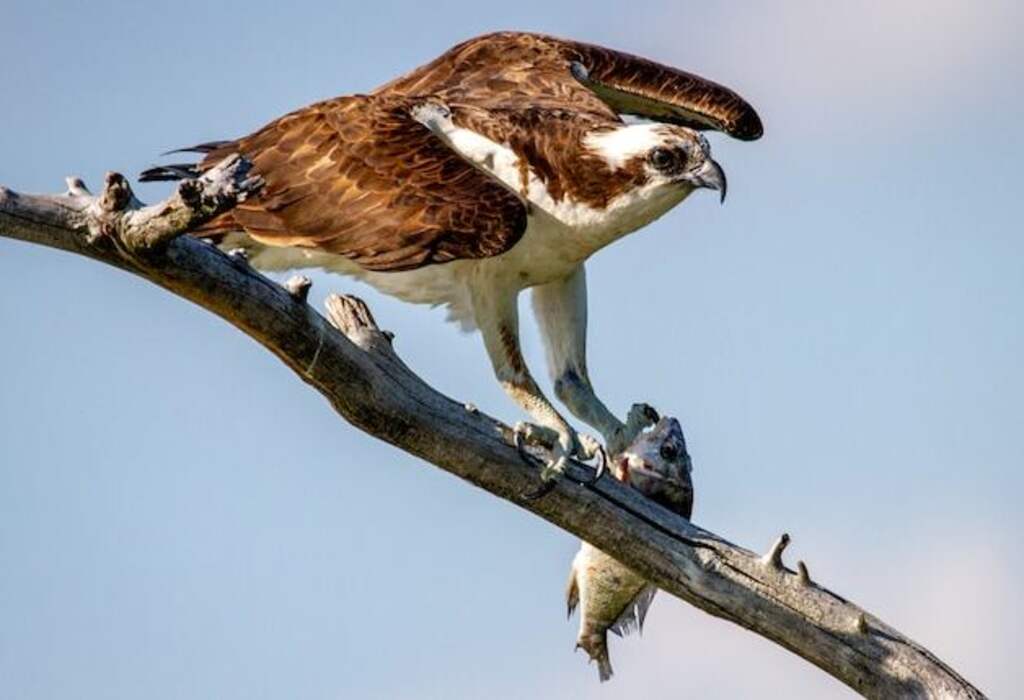Prepare to be hooked, fellow nature enthusiasts! Today, we dive into the realm of avian piscine pursuit and seek the truth about the extraordinary question: Do hawks catch fish?
Hawks are renowned for their impressive hunting abilities, but did you know that some species have evolved unique adaptations to become successful aquatic predators?
Join us as we unravel the secrets behind their underwater prowess, exploring their physical adaptations, habitat preferences, and cunning hunting strategies.
Get ready to dive deep into the fascinating world of fish-hunting hawks, where sky meets water and nature’s wonders unfold before our eyes!
Table of Contents
- 1 Key Takeaways
- 2 Do Hawks Catch Fish?
- 3 Introduction to Fish-Hunting Hawks
- 4 Physical Adaptations for Catching Fish
- 5 Hunting Strategies
- 6 Species of Fish-Hunting Hawks
- 7 Habitat and Range
- 8 Diet and Nutrition
- 9 Threats to Fish-Hunting Hawks
- 10 Conservation Efforts
- 11 Conclusion
- 12 Frequently Asked Questions
- 12.1 How do hawks differentiate between different species of fish?
- 12.2 What is the success rate of hawks catching fish compared to other prey?
- 12.3 How do hawks avoid getting wet while diving for fish?
- 12.4 Do different species of fish-hunting hawks have different hunting strategies?
- 12.5 How do hawks determine the size of the fish they can catch?
- 13 Author
Key Takeaways
- Hawks have physical adaptations and hunting strategies that make them well-suited for catching fish.
- Several species of raptors, including Osprey, Northern Harrier, Cooper’s Hawk, Bald Eagle, and Red-tailed Hawk, hunt fish.
- Habitat diversity and migration patterns are important for the survival of fish-hunting raptors.
- Threats to the survival of fish-hunting raptors include overfishing, pollution, and habitat destruction, but conservation efforts such as improving prey availability and restoring wetlands can help mitigate these threats.
Do Hawks Catch Fish?
Yes, hawks do catch fish! The Osprey, in particular, is a master fish hunter, with specialized adaptations for aerial fishing. It soars above water, spots fish from high above, then dives to snatch them with its sharp talons. This impressive fishing ability sets hawks apart as skilled aquatic predators.
Introduction to Fish-Hunting Hawks
The following section provides an overview of the fish-hunting capabilities of hawks. Behavioral patterns and hunting success of fish hunting hawks are quite fascinating to observe.
These birds of prey have developed specialized hunting techniques that enable them to catch fish with great efficiency.
They are often seen flying low over water bodies, scanning the surface for potential prey. Once a target is spotted, they dive into the water at high speeds, using their sharp talons to grab the fish.
Hawks have been known to catch a variety of fish species, including trout, salmon, and catfish. Their success rate largely depends on the size and agility of the fish they are targeting.
The physical adaptations for catching fish will be discussed in the subsequent section.

Physical Adaptations for Catching Fish
Fish-hunting hawks have evolved physical adaptations that enable them to catch fish with ease.
These adaptations include sharp talons and feet that allow them to grasp slippery fish, waterproof feathers that keep them dry while diving into water, and hooked beaks that help them tear apart their prey.
These adaptations are crucial for the survival of fish-hunting hawks, as they rely heavily on their ability to catch fish for sustenance.
Sharp Talons and Feet
With sharp talons and feet designed for grasping and gripping, hawks are equipped with the necessary tools to efficiently capture prey.
These physical adaptations have been the subject of extensive anatomical studies, which have shown that hawks have long, sharp talons that are used to pierce and hold onto their prey.
Additionally, their feet are equipped with a series of sharp, curved claws that are ideal for gripping and carrying prey.
These adaptations allow hawks to hunt with remarkable accuracy and efficiency, making them formidable predators in their natural habitats.
By understanding the physical characteristics of hawks, we can gain a better appreciation for their hunting behavior and their remarkable ability to thrive in a variety of environments.
As we move on to the next subtopic, we will explore another key adaptation that allows hawks to thrive in their aquatic habitats: their waterproof feathers.
Here’s a table of some hawks that hunt and eat fish:
| Hawk species | Description | Diet |
|---|---|---|
| Osprey | A large bird of prey with a distinctive white head and brown body | Feeds almost exclusively on fish |
| Northern Harrier | A medium-sized hawk with a white rump patch that is visible in flight | Will eat small mammals, birds, reptiles, and amphibians, but fish can make up a significant portion of its diet in some areas |
| Cooper’s Hawk | A medium-sized hawk with short, rounded wings and a long tail | Will prey on a variety of birds, including those near bodies of water that may include fish in their diets |
| Red-tailed Hawk | A large hawk with a reddish-brown tail | Will hunt a variety of prey, including small mammals, birds, and reptiles, but may also take fish from streams or ponds |
Waterproof Feathers
An important adaptation for hawks that live around water is their ability to repel moisture with their specialized feathers.
These feathers have water-repellent properties that help hawks stay dry while hunting for prey in wet environments.
The evolution of waterproof feathers is a result of millions of years of natural selection, where hawks with better water-repellent feathers had higher chances of survival and reproduction.
These feathers have a unique structure that makes them water-resistant and helps keep the hawk’s body dry. The feathers also have an oily coating that provides an extra layer of protection against water.
With their waterproof feathers, hawks can dive into the water to catch fish without getting wet. This adaptation has given hawks an advantage over other birds when it comes to hunting around water.
Moving on to the next section about ‘hooked beaks,’ hawks use their sharp beaks to tear apart their prey.
Hooked Beaks
Sharp and sturdy, the hooked beak of hawks serves as a surgical tool for tearing apart prey. The beak structure of hawks is specially adapted to their predatory lifestyle, allowing them to detect and capture prey with ease.
Here are four ways in which the hooked beak aids in hunting:
1) The sharp tip of the beak is used to grasp and immobilize prey.
2) The hooked shape of the beak allows for tearing and shredding of flesh.
3) The serrated edges of the beak aid in cutting through tough hides.
4) The powerful muscles attached to the beak allow it to exert force and break bones.
Additionally, the beak is highly sensitive, allowing hawks to detect even the slightest movements of their prey. The combination of the hooked beak and keen senses makes hawks formidable hunters.
Moving forward, it is important to examine the various hunting strategies employed by hawks to gain a deeper understanding of their hunting prowess.
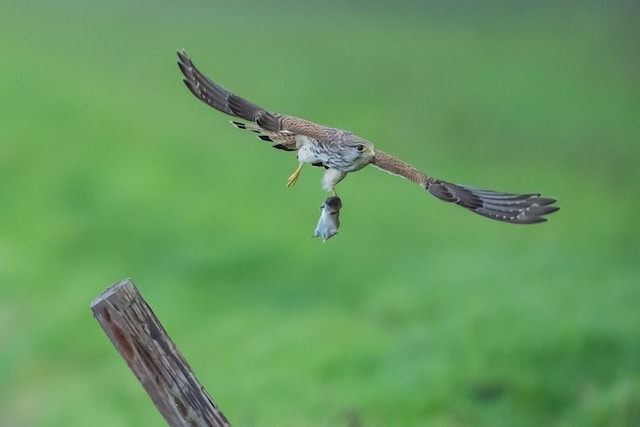
Hunting Strategies
Hawks use a variety of hunting strategies to catch prey, including fish. One such strategy is hovering over water, a technique used by some species of hawks that allows them to stay in one spot and scan the water for fish.
This technique is often used by the northern harrier, which collaborates with other northern harriers to flush out prey from the water.
Another hunting strategy used by hawks is diving from a height to catch their target.
This technique is used by the osprey, which has specially adapted talons that allow it to grab onto slippery fish as it dives into the water.
Environmental factors, such as the availability of prey and the habitat in which the hawk lives, can also influence the hunting strategies used by hawks.
Overall, hawks are skilled predators that have evolved a variety of strategies to catch prey, including fish.
In the next section, we will explore the different species of hawks that specialize in catching fish.
Species of Fish-Hunting Hawks
Several species of raptors have adapted to hunting fish as a primary food source, such as the osprey, which has been observed catching fish weighing up to 2.5 pounds. However, there are other types of hawks that are also skilled at catching fish.
The Northern Harrier, which can be found in wetlands, marshes, and fields, has been known to hunt fish in shallow waters.
The Cooper’s Hawk, which prefers wooded areas, has been observed catching fish around streams and ponds.
The Bald Eagle, known for its impressive size and strength, often hunts fish near bodies of water such as rivers, lakes, and coastlines.
Lastly, the Red-tailed Hawk, which is commonly found in open fields and grasslands, has been seen catching fish in shallow streams and ponds.
These hawks have all developed unique hunting strategies and physical adaptations that allow them to catch fish in their respective habitats.
In the next section, we will explore the habitat and range of these fish-hunting hawks.
Habitat and Range
Different species of raptors that hunt for fish have adapted to various wetland, woodland, and grassland habitats across the world.
Habitat diversity plays a crucial role in the survival of these birds, as it provides them with the necessary resources to meet their basic needs.
For instance, the Osprey can be found in coastal regions, where they can fish in shallow waters. The Bald Eagle, on the other hand, prefers to hunt in large rivers, lakes, and reservoirs.
The Harpy Eagle hunts in tropical forest canopies, and the African Fish Eagle hunts in open savannas near water bodies.
Migration patterns are also essential for these birds.
Some species, such as the Osprey, migrate over long distances to find suitable habitats and prey while others, like the Bald Eagle, remain in their breeding grounds year-round.
Understanding the habitat and range of these birds is critical for their conservation and management.
In the subsequent section about ‘diet and nutrition,’ we will explore the types of fish that these raptors prey upon and how they obtain their nutrients.
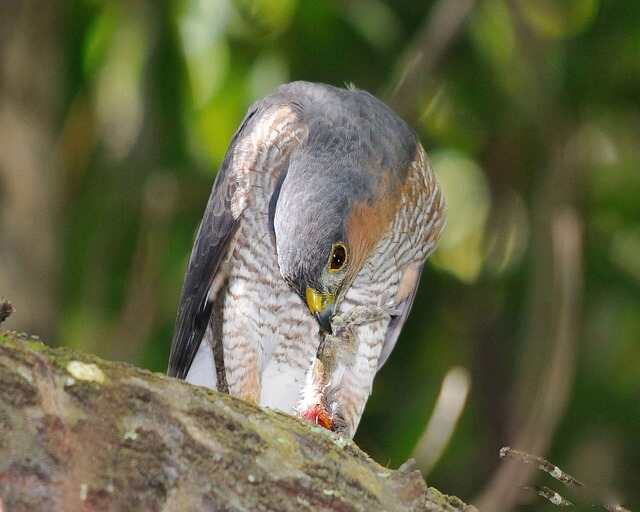
Diet and Nutrition
The predatory birds that specialize in hunting for fish have developed unique dietary requirements and feeding behaviors, which are closely linked to their habitat and hunting techniques.
These birds, such as ospreys and fish eagles, have specific nutritional needs that can only be met by consuming fish.
They have evolved to become expert hunters, with sharp talons and hooked beaks that enable them to grasp and tear apart their prey.
In their natural habitat, these birds are often seen circling above the water, watching for fish swimming near the surface.
Once they spot their prey, they swoop down and use their powerful wings to plunge into the water and catch the fish with their talons.
The nutritional benefits of a fish-based diet are essential for these birds to maintain their strength and agility, as well as to support their breeding efforts.
However, the decline in fish populations due to overfishing and pollution pose a significant threat to the survival of fish-hunting hawks.
Threats to Fish-Hunting Hawks
Habitat destruction and environmental pollution have significantly impacted the availability of fish for predatory birds that specialize in hunting for aquatic prey.
Overfishing and pollution have caused a decline in fish populations, which in turn affects the diet of fish-hunting hawks.
These birds are already facing threats such as loss of habitat and human disturbance, but the reduction in their food sources further endangers their survival.
The impact of overfishing and pollution differs depending on the location and severity of the issue.
For example, in some areas, overfishing has caused a decline in the number of fish available for the hawks to hunt, while in other areas, pollution has made the fish toxic and unsafe for consumption.
The following table summarizes the impact of overfishing and pollution on the food sources of fish-hunting hawks:
| Overfishing Impact | Pollution Effects | |
|---|---|---|
| Location | Reduced fish populations | Toxic fish |
| Severity | Varies depending on the level of overfishing | Varies depending on the level of pollution |
Conservation efforts have been made to address these issues and protect the fish-hunting hawks.
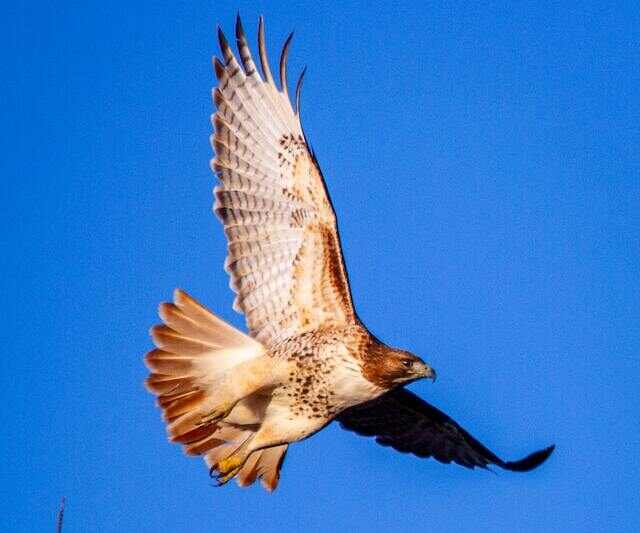
Conservation Efforts
Conservation efforts aimed at improving the availability of prey for fish-hunting raptors have been implemented to counteract the negative effects of overfishing and pollution.
Community involvement in the restoration of wetlands and waterways has been a critical component of these efforts, as natural habitats are essential to the survival of fish and the raptors that depend on them.
Government policies have also played a role in preserving fish populations by regulating fishing practices and limiting pollution.
Additionally, educational programs and outreach initiatives have helped raise awareness about the importance of maintaining healthy ecosystems for both wildlife and human communities.
Despite these efforts, challenges remain, including the need for continued research and monitoring of fish populations and the effects of climate change.
The future outlook for fish-hunting raptors and their prey will depend on a sustained commitment to conservation efforts and collaboration between scientists, policymakers, and the public.
Conclusion
In conclusion, fish-hunting hawks have evolved a set of physical adaptations that enable them to effectively catch fish from various aquatic habitats.
Their hunting strategies are diverse and complex, ranging from aerial dives to stealthy approaches along the water surface.
Different species of fish-hunting hawks exhibit specific dietary preferences and have unique ranges and habitats.
Despite their remarkable abilities, fish-hunting hawks face a range of threats, including habitat loss, pollution, and hunting.
Conservation efforts have been put in place to safeguard their populations, but more needs to be done to ensure their long-term survival.
One potential objection to the conservation efforts for fish-hunting hawks is that they may compete with humans for fish resources.
However, it is important to recognize that fish-hunting hawks play a crucial role in balancing aquatic ecosystems and maintaining healthy fish populations.
Moreover, their presence in these ecosystems has cultural and ecological significance, as they have been revered and studied by humans for centuries.
Therefore, it is imperative that we work towards coexistence with these remarkable predators, rather than viewing them as a hindrance to our interests.
By protecting these birds and their habitats, we not only ensure their survival, but also contribute to the overall health and diversity of our natural world.
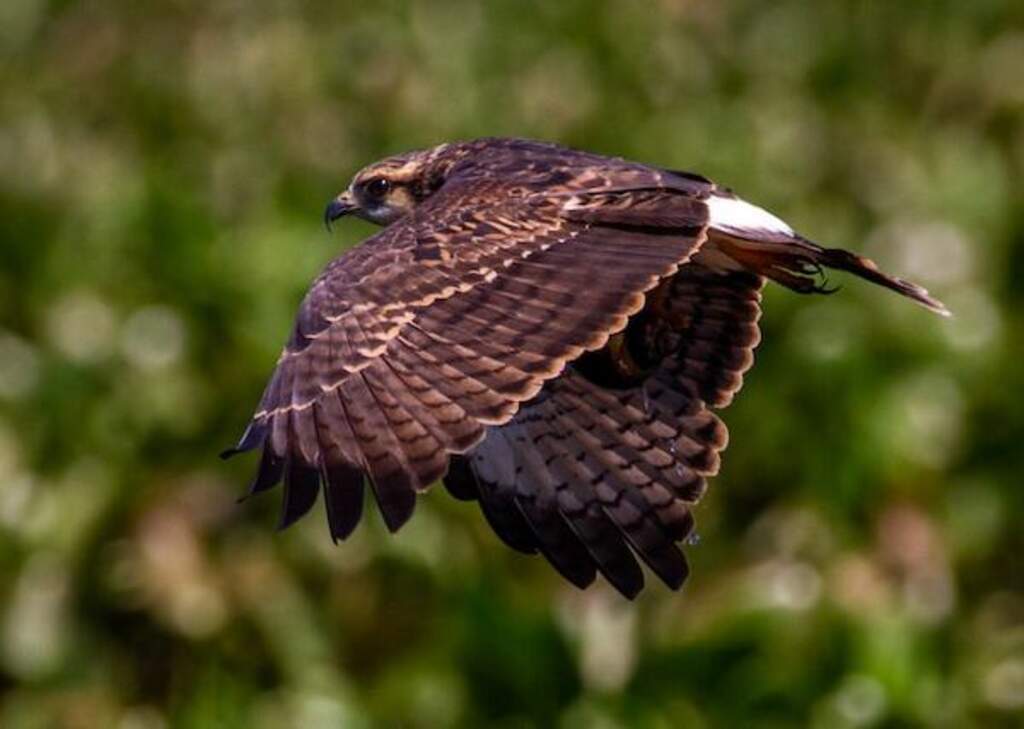
Frequently Asked Questions
How do hawks differentiate between different species of fish?
Hawks identify fish species through visual cues, such as size, shape, and color patterns. They also use their keen eyesight to spot movement and detect prey in water. Hunting behavior involves diving, grasping with talons, and carrying the catch away.
What is the success rate of hawks catching fish compared to other prey?
Hawks’ hunting techniques and success rates vary depending on prey availability and habitat. However, studies suggest that fish make up a small percentage of their diet, and their impact on fish populations is negligible.
How do hawks avoid getting wet while diving for fish?
When hawks dive for fish, they use various drying techniques such as shaking and preening to avoid getting wet. Additionally, they selectively choose prey that are closer to the surface to minimize the risk of getting soaked.
Do different species of fish-hunting hawks have different hunting strategies?
Different species of fish-hunting hawks utilize various hunting techniques that are influenced by environmental factors such as habitat, prey availability, and competition. Some use aerial attacks or plunge-diving while others use stealth or perch-hunting.
How do hawks determine the size of the fish they can catch?
Visual cues play a crucial role in determining the size of fish hawks can catch. Hunting behavior of hawks involves assessing the depth and clarity of water, estimating the size of prey, and using visual acuity to monitor fish movements.

